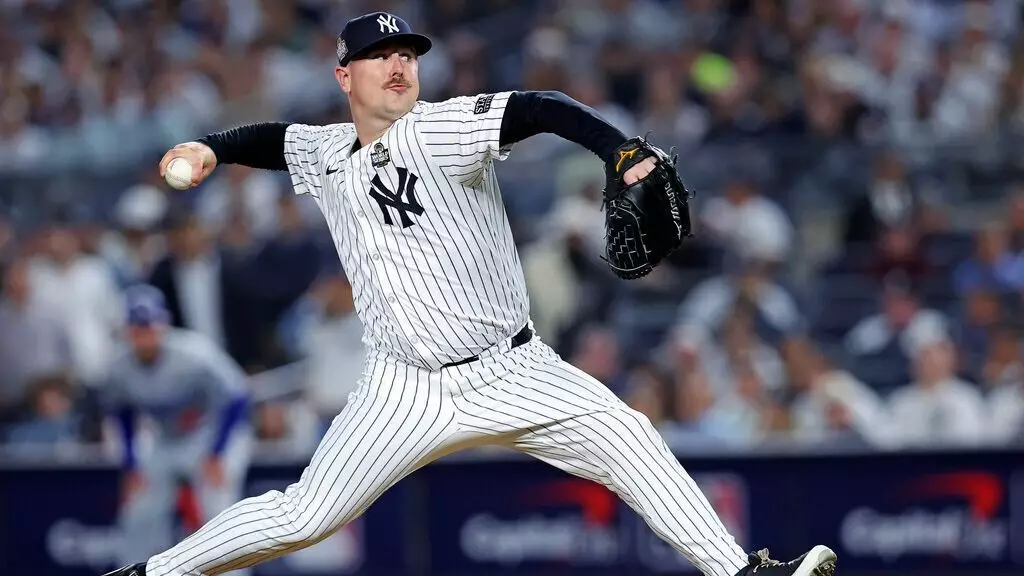The world of Major League Baseball (MLB) often revolves around financial negotiations and contracts that reflect a player’s value and potential contributions to their team. One of the pivotal moments during the offseason for many players is salary arbitration, a process where players and teams present their cases regarding salary disputes. Recently, two notable figures in this context, New York Yankees reliever Mark Leiter Jr. and Pittsburgh Pirates pitcher Dennis Santana, faced disappointing outcomes in their arbitration hearings. Their experiences highlight the complexities and ramifications of salary negotiations in professional sports.
In a ruling that determined Leiter Jr.’s 2023 salary, the arbitration panel decided that he would earn $2.05 million, falling short of his request for $2.5 million. This decision is reflective of a broader trend where teams often hold the upper hand in arbitration disputes—Leiter’s case is just one instance of this dynamic. Despite a solid season where he showcased his abilities as a reliable reliever—finishing with a 4.50 ERA and contributing to both the Chicago Cubs and New York Yankees—the panel leaned towards the lower end of his request.
Conversely, Dennis Santana, who also faced arbitration, was slated to earn $1.4 million, after his request for $2.1 million was denied. At 28, Santana presents a career filled with ups and downs, having transitioned through various teams while striving to establish a stable presence in the major leagues. His performance, including a 3.89 ERA over 62 relief appearances last year, may not have been deemed sufficient for a higher salary by the arbitration panel, reflecting the difficulty players face even when they show potential in their roles.
The outcomes for Leiter and Santana are symptomatic of the shifting landscape in MLB where player salaries are continuously evaluated against their performance metrics and market conditions. The arbitration process itself can be contentious, with teams seeking to minimize costs while players strive for recognition of their contributions. As evidenced by these decisions, the dynamics often favor teams—three out of four arbitration cases have resulted in rulings favoring the organizations over the players.
It’s intriguing to note that the Yankees’ decision is particularly significant, marking the first time since 2017 that the team had a player go to arbitration. The case of Leiter serves not only as an individual assessment but also as a reflection of the Yankees’ broader payroll strategies and how newer arbitration guidelines affect their financial decisions.
Additional players also caught the arbitration spotlight, offering insight into varying outcomes. Right-hander Johan Oviedo, who also faced disappointment following his arbitration case, will earn a modest $850,000, while outfielder Mickey Moniak emerged victorious and will make $2 million. These contrasting results emphasize the unpredictable nature of the arbitration process and how variables such as franchise budget constraints and player performance histories play into final decisions.
Adding to the complexities, Los Angeles Dodgers reliever Alex Vesia avoided arbitration altogether by agreeing to a contract ensuring $2.3 million, demonstrating that not every player needs to enter a hearing. Vesia’s successful season—boasting a 1.76 ERA in 67 appearances—may have contributed to his ability to secure a deal with minimal friction, reinforcing a trend where players with exceptional seasons receive lucrative contracts that preclude arbitration battles.
Salary arbitration in MLB encapsulates the tension between player ambitions and team strategies. The recent cases of Mark Leiter Jr. and Dennis Santana illuminate the challenges players face in asserting their value, especially within the confines of a system that often favors team interests. As the remaining arbitration hearings approach, the outcomes of these negotiations are poised to influence not only the individual careers of the players involved but also the broader financial landscape of Major League Baseball. Ultimately, these outcomes serve as powerful reminders of the intricate ballet of performance, expectation, and financial acumen that characterizes professional sports contracts.

